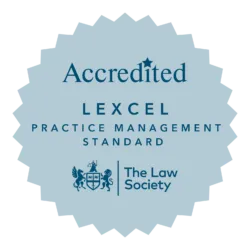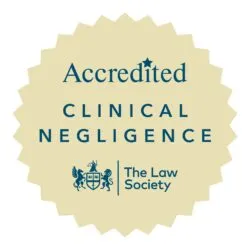
Pleural plaques: Jack Straw statement
Justice Secretary Jack Straw has made a statement on the government\’s decision on the question of compensation for pleural plaques.
The Lord Chancellor and Secretary of State for Justice (Jack Straw):
This ministerial statement sets out the government\’s decision on the question of compensation for pleural plaques, following its consultation on the issue. A full summary of the submissions we received during that consultation will be published shortly.
Background
On 17 October 2007 the Law Lords upheld a Court of Appeal decision that the existence of pleural plaques – small localised areas of fibrosis caused by exposure to asbestos fibres, found within the pleura of the lung – does not constitute actionable or compensatable damage. Prior to that, people had been able to bring claims for compensation for pleural plaques since the 1980s.
In light of representations made by individuals and organisations who strongly disagreed with the Law Lords\’ decision, and in recognition of the concerns that existed, the government published a consultation paper on the issue which sought views on a number of options in response to the ruling, including whether to overturn the House of Lords\’ judgment and legislate so that pleural plaques would again be compensatable under civil law.
In total the government received 224 responses to its consultation paper. In addition, reports were received from the Chief Medical Officer for England and Wales and the Industrial Injuries Advisory Council reviewing the medical evidence on pleural plaques. Very helpful further discussions have also taken place with key medical experts in relation to the medical evidence.
back to top
Medical evidence
This has confirmed that the presence of pleural plaques is an indicator that a person has been exposed to asbestos. Given that exposure to asbestos increases the risk of developing a serious illness, a diagnosis of pleural plaques can give rise to an understandable sense of anxiety and unease. However, while the exposure to asbestos has resulted in an anatomical change, in the great majority of cases pleural plaques do not in themselves produce any significant physiological change or loss of lung function, and only very rarely give rise to physical symptoms. In such rare cases it is still possible for individuals to bring a civil claim for damages.
There is no available medical evidence to show that pleural plaques become malignant or lead to mesothelioma or other asbestos-related diseases. Current evidence indicates that it is a person\’s exposure to asbestos that produces any increased risk of developing a serious asbestos-related disease rather than the pleural plaques themselves.
The Chief Medical Officer has invited the British Lung Foundation and the British Thoracic Society, to develop information materials for health care professionals, and an information leaflet for people diagnosed with pleural plaques, to ensure that consistent and accurate information is provided about the condition to help allay concerns as far as possible.
On the basis of medical evidence received during the course of this review, including authoritative reports from the Chief Medical Officer and the Industrial Injuries Advisory Council, we are unable to conclude that the Law Lords\’ decision should be overturned at this time or that an open-ended no-fault compensation scheme should be set up. While the current medical evidence is clear that pleural plaques are a marker of exposure to asbestos, and that exposure to asbestos significantly increases the risk of asbestos-related disease, any increased risk of a person with pleural plaques developing an asbestos-related disease arises because of that person\’s exposure to asbestos rather than because of the plaques themselves. However, if new medical or other significant evidence were to emerge, the government would obviously reassess the situation.
back to top
Limited extra-statutory scheme
While we cannot, for the reasons outlined above, restore the previous position, we do acknowledge the unique position of those individuals who had already begun, but not resolved, a legal claim for compensation for pleural plaques at the time of the Law Lords\’ ruling in October 2007. Such people would have had an understandable expectation that their claim would result in compensation and many had made plans accordingly.
The government has decided to make payments of £5,000 to individuals in this limited category under an extra-statutory scheme. The payment broadly reflects the level of compensation likely to have been received if pleural plaques had continued to be compensatable. Detailed arrangements relating to the operation of this extra-statutory scheme will be announced shortly. The scheme will apply to England and Wales, where the Ministry of Justice has responsibility for civil law. An information telephone line will be available by the end of the week and the number will be published at www.justice.gov.uk/about/pleural-plaques.htm. The government regards this as a unique situation and as not setting any precedent for any other circumstances where litigants may be disappointed.
back to top
Speeding up mesothelioma claims
A significant consequence of the House of Lords\’ decision has been that people diagnosed with plaques can no longer bring proceedings to establish liability for negligent exposure to asbestos. This was useful for some individuals later diagnosed with mesothelioma, as prior establishment of liability expedited their new compensation claim. This is of particular importance where conditions like mesothelioma are concerned, as patients frequently die very soon after diagnosis, leaving little time to trace records and obtain compensation. The government believes it is imperative that steps are taken to improve the speed of payment for compensation claims for mesothelioma and other serious asbestos related diseases.
We will therefore establish a working group composed of claimant solicitors, trade unions, insurers, the judiciary, and civil servants to examine litigation practices and procedures for compensation claims relating to mesothelioma, and identify options for streamlining them in order to reduce the time taken to conclude cases. In particular the working group will consider:
the operation of the Practice Direction for court proceedings introduced in April 2008 to ensure that it is working effectively
possible solutions to difficulties arising from delays in obtaining medical reports because of the shortage of medical experts in this area
why more claims don\’t settle, and whether any provisions in relation to pre-action behaviour would be helpful in reducing the time taken to establish liability without the need for court proceedings.
We also intend to consider changes to the substantive law to:
resolve difficulties experienced by mesothelioma sufferers as a result of differences in the value of claims which are settled before or after the death of the person concerned and to clarify the limitation period for bringing a claim
clarify that the limitation period for bringing a claim runs from the date that the claimant becomes aware that he or she has mesothelioma rather than from the date they became aware of the original exposure to asbestos.
In addition, in November 2009 we introduced the Third Parties (Rights against Insurers) Bill into Parliament under a new procedure for Law Commission Bills. The Bill will enable claims against insolvent employers to be brought direct against the employer\’s insurer. This will simplify court procedures and remove the need for dissolved companies to be restored to the register of companies. The Bill is expected to become law in this Parliament.
back to top
Employers\’ Liability Tracing Office
Further to these initiatives we are also taking action to deal with the problem of people who develop a serious asbestos-related disease but are unable to obtain full compensation because they cannot trace the employer\’s insurer.
This problem has been recognised for some time, and since 1999 the Association of British Insurers and the Lloyds Market Association have committed to a voluntary Code of Practice for tracing EL Insurance Policies. However, while the Tracing Service has led to some improvements, there are still many individuals who are left without help – 3,210 of them in 2008.
That situation is clearly unsatisfactory and the government is therefore consulting on two proposals to improve matters.
We believe that an essential first step is the creation of a UK-wide Employers\’ Liability Tracing Office (ELTO) to manage an electronic database of EL policies and to operate the existing tracing service. The Association of British Insurers has agreed to drive forward this work to help claimants and their representatives, informed by the outcome of the consultation. The new Office will initially be launched on a voluntary basis but we would ultimately like it to be a requirement on all insurers to publish relevant policy details on the ELTO.
The ELTO will initially be populated with existing trace data but new and renewed policies will be included shortly afterwards. One of the issues explored in the consultation is the extent to which historic insurance records can be added to the database.
We have every expectation that the ELTO will deliver significant results, creating a database of records that will help many thousands of people trace policies and receive compensation in the future.
back to top
Employers\’ Liability Insurance Bureau
However, even with an ELTO there will be some people, especially those who suffer from long-tail diseases like mesothelioma, who are unable to trace their insurance records and thus are denied full compensation. The government therefore proposes to establish an Employers\’ Liability Insurance Bureau (ELIB) providing a compensation fund of last resort for individuals across the UK who are unable to trace EL insurance records.
The consultation, published on 10 February [on the Department for Work and Pensions website], examines what an ELIB should cover, the impact of an ELIB on insurers and employers, how much should be paid by way of compensation, limitations on claiming from the ELIB, and what more can be done to ensure that employers who are legally obliged to obtain ELCI do so. The government will consider fully the responses to the consultation before determining next steps towards the introduction of an ELIB.
back to top
Increased mesothelioma payments
A mandatory ELTO and an ELIB should, in time, provide a comprehensive framework for supporting people who develop a serious asbestos-related disease. However, in recognition of the need for action now, the government is taking a series of steps to increase the upfront payments that are currently made to mesothelioma sufferers and their dependants.
The government will increase payments made under the Pneumoconiosis etc (Workers\’ Compensation) Act 1979 by 1.5%, even though the retail price index showed negative growth. In addition, we will increase payments made due to Mesothelioma under the Child Maintenance and Other Payments Act 2008 so that they equal payments made under the Pneumoconiosis etc (Workers\’ Compensation) Act 1979.
The Secretary of State for Work and Pensions is also amending regulations to increase payments to all dependants under the 1979 Act and the 2008 Act by up to £5,000, so that their awards are closer to those paid to sufferers. All of these increases will come into effect on 1 April 2010.
back to top
Medical research into asbestos-related disease
The fact that the UK has one of the highest rates of death from mesothelioma in the world is a legacy of our industrial heritage and the part that asbestos played in it. Just as the UK was a global leader in the asbestos industry, we must now become a global leader in research into asbestos-related disease.
We have received strong representations from clinicians, asbestos support groups and trade unions – as well as from members on all sides of this House – for the creation of a National Centre for Asbestos-Related Disease, a collaborative network of funded researchers whose core purpose would be to advance medical research into the prevention, cure and alleviation of asbestos-related disease – primarily mesothelioma.
There is now widespread recognition, including within the medical research community, that while there has been considerable investment infto cancer research generally, not enough has been focussed on the study of cancers of the lung, including mesothelioma. Yet Mesothelioma is now the twelfth most common cancer killer in men and the cancer of most rapidly increasing incidence in women.
We are determined to expand research in this area. The Secretary of State for Health has therefore asked Department of Health officials to consider and advise on how best to create a world-leading network of medical research practitioners for asbestos-related disease. The department will involve Michael Clapham MP, Dr John Edwards and others with a special interest this review.
Based on their recommendations and on advice from National Cancer Research Institute about research priorities, we will set out how government will support an increase in research investment in this area. In addition, we are very pleased to announce that the insurance industry will be contributing £3 million towards research into asbestos-related disease.
The government believes that these measures will be of real and significant benefit to people diagnosed with mesothelioma and other asbestos-related diseases.
Ends










